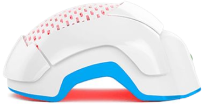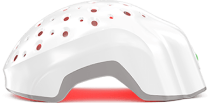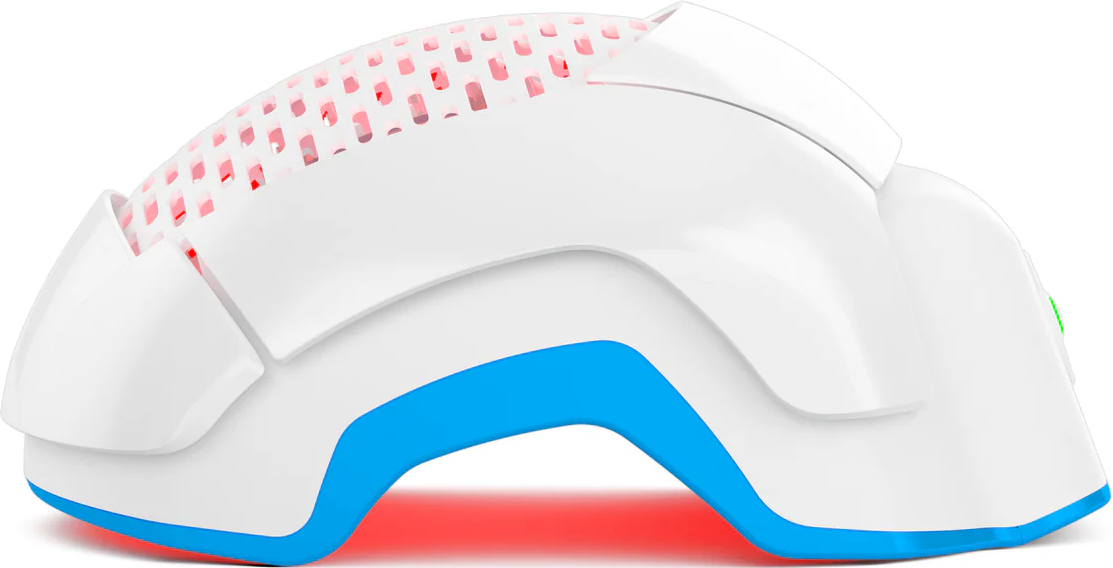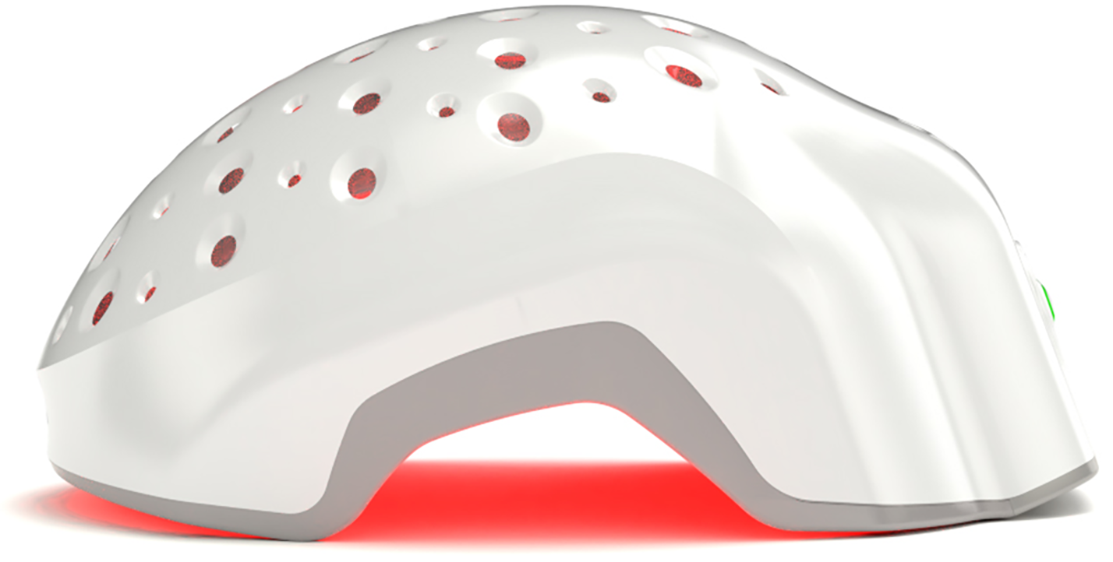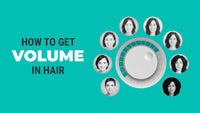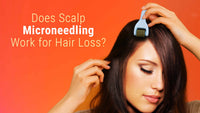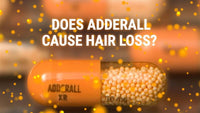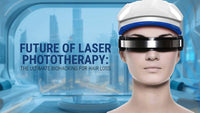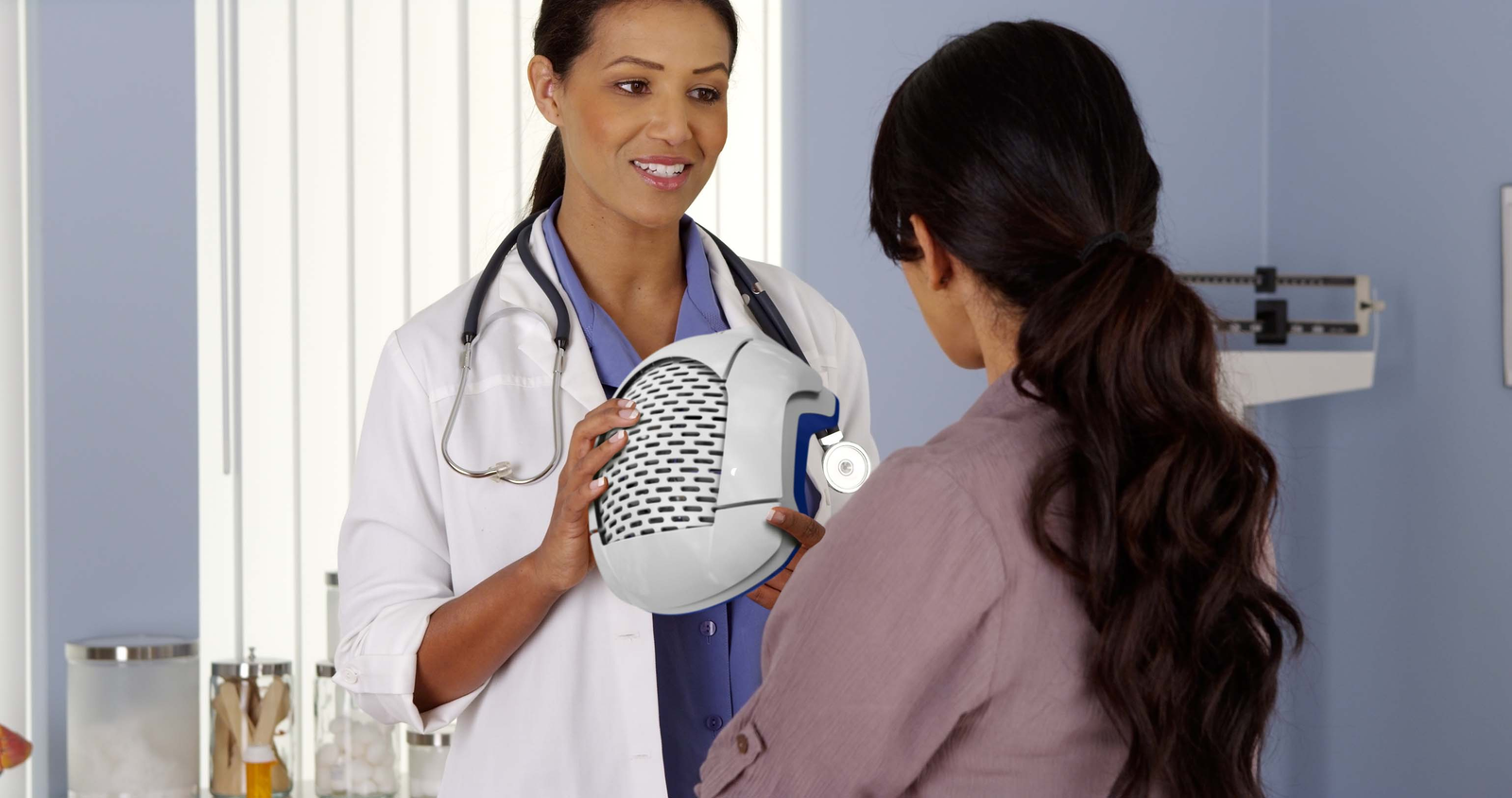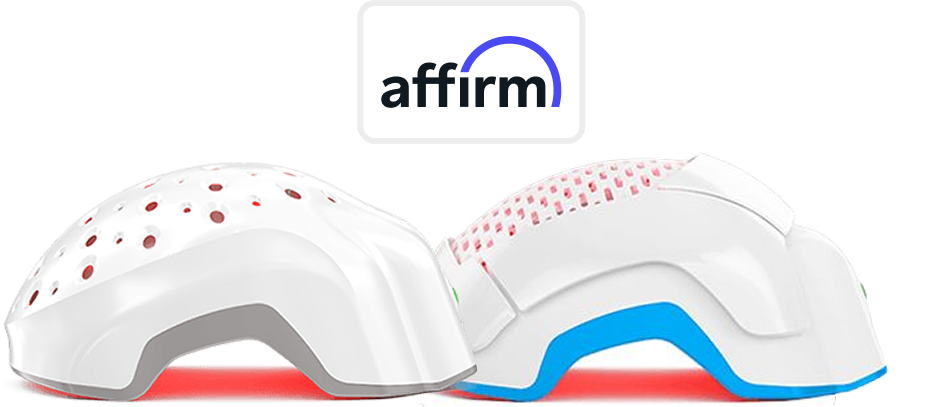Hair loss therapy, particularly the much-hyped world of laser helmets, feels like a jungle. Scroll through ads and you’ll see bold promises, “More lasers! Higher mW! Guaranteed growth!” It sounds intuitive, right? If one laser is good, then a hundred must be better. Except… biology rarely plays by marketing logic.
Laser Phototherapy (LPT, sometimes called low-level laser therapy or LLLT) has quietly transitioned from fringe curiosity to a clinically recognized tool for treating hair thinning and androgenetic alopecia. But, and it is a big but, success depends less on the sheer number of lights and more on how those photons interact with your scalp and follicles. Energy quality, wavelength, tissue penetration, ventilation, and treatment consistency are what truly separate effective therapy from expensive gadgets gathering dust.
Let’s consider this. One medical-grade laser diode can deliver 6,000–60,000× the effective energy of a single LED. That means a helmet crammed with hundreds of cheap LEDs may look impressive… until you realize most of its light scatters off hair shafts or dies at the skin’s surface.
This article reveals the science, slices through the marketing fog, and most importantly, helps you choose a hair therapy solution that actually works.
What Exactly Is LPT?
Laser Phototherapy is a form of photobiomodulation. In plain English, controlled therapeutic light nudges cells toward healthier function. Unlike surgical lasers, LPT does not burn or heat tissue. It uses precise wavelengths, commonly 630–680 nm, that mitochondria inside follicle cells absorb, which can elevate ATP production and coax hairs from resting (telogen) into active growth (anagen).
Clinical studies, including double-blind randomized trials, have shown consistent improvement in hair density and thickness with regular LPT use. The FDA has cleared several laser devices for androgenetic alopecia in both men and women. The key point is simple. This therapy is evidence-backed, although it is not instant magic.
How LPT Actually Stimulates Follicles?
The working theory is threefold:
- Improved mitochondrial energy supports follicle metabolism.
- A microcirculation boost increases oxygen and nutrient delivery.
- Anti-inflammatory effects reduce follicle stress, which can prolong the growth cycle.
But the devil is in the delivery. Energy that never reaches the follicle does… nothing. Coherent, collimated laser light penetrates deeper, past hair, oil, and surface scattering, while most LED light fizzles out before it can help. People often confuse brightness with effectiveness. A room full of flashlights will not regrow your hair. A single medical-grade laser might.
Safety in one glance. Hair-loss LPT devices employ cold lasers in the Class 3R range. Output per diode is low and non-heating by design. The goal is photobiostimulation, not thermal damage. That distinction matters a lot when we talk about packing in “more lasers.”
Read more about Laser Phototherapy, the ultimate biohack for hair growth.
The Role of Wavelength, Energy Density, and Consistency
Research suggests the therapeutic window for hair growth sits around 630–680 nm. Too shallow and the photons do not reach the follicles. Too deep and energy dissipates without the desired cellular response. Energy density, often discussed as irradiance in mW/cm² and fluence in J/cm², also matters. Many low-end helmets boast huge diode counts but deliver weak, diffuse light.
Consistency is another hidden hero. Most clinical protocols recommend 15–20 minutes, two to three times per week for four to six months before measurable results appear. Skipping treatments or chasing quick hacks with overpowered, poorly ventilated devices risks either zero benefit or, worse, irritation.
The Myth of “More Lasers = Better Results”
It is marketing gold. More lights look like more power. Early consumer devices often advertised the raw count of lasers or LEDs because bigger numbers sell. A cap with 272 emitters sounds formidable… until you realize many of those diodes barely penetrate the scalp. And even when they do, packing more emitters into a tight space introduces a separate problem that marketing rarely mentions, heat build-up.
Manufacturers leaned into laser counts because quantifying effective energy delivery at the follicle is harder to explain than “We have twice as many.” Studies and bench tests show diminishing returns when companies cram in additional low-output emitters without improving power per diode, spacing, and airflow.
Why More Lasers Can Be Deceptive?
Here is the problem. Quantity does not equal quality. One high-quality laser diode emits focused, coherent light capable of delivering far more effective energy than a single LED. LEDs are cheaper, scattered, and quickly absorbed or reflected.
Now the part brochures skip. The top of the head sits around 98.6°F in daily life. Add 100, 200, or 300 emitters inside a tight shell and you add thermal load. Without proper ventilation in the design, those diodes can raise scalp temperature by about 10–20 degrees during a session. High heat is not just uncomfortable. It can nudge follicles toward shedding phases such as telogen effluvium. The scalp is already one of the warmest zones on the body. Trap heat and moisture, reduce airflow, and you invite irritation, inflammation, and even fungal overgrowth. In short, more lasers without thermal management do not just waste energy, they can backfire.
There is another physics wrinkle. As temperature climbs, laser output rolls off. Overheated arrays can slump to less than 0.1 J/cm² at the scalp, which is effectively a non-dose. A mental scale helps. On one side, heat. On the other, dosage. When heat goes up, dosage goes down, and results follow it downward.
It is like watering a lawn. A hose with 80 full jets drenches effectively. A hose with 500 pinholes just mists the air. Most mass-market, emitter-saturated caps are the pinhole hose.
Another overlooked issue is beam interference and coverage. Packing a shell with too many low-power emitters can create hotspots and under-treated zones. Excess lights do not bypass hair shafts or oil films either, so “more” often remains cosmetic.
High-quality LPT devices with fewer, stronger diodes and controlled airflow have outperformed LED-heavy helmets in comparative studies and internal bench work. Devices that optimize wavelength, power density, spacing, and ventilation produce the most consistent regrowth. Users who chase bigger counts often end up frustrated. Worse, overheated caps can irritate the scalp while doing very little for follicles. Quality trumps quantity, and stable dosing trumps flashy totals.
Also Read: Lasers vs LEDs for Hair Growth
Factors That Actually Matter in Laser Hair Therapy
Forget the flashy spec sheets for a second. If you truly want results, focus on the fundamentals, those boring but crucial factors that dictate whether your follicles wake up or snooze through your investment.
Consistency
Hair follicles run on a slow biological rhythm. Miss too many sessions and your regrowth window weakens. A decent device used faithfully will beat a premium helmet that sits on a shelf. This is the piece most people, admittedly, get wrong.
Power Density, Coverage, and Ventilation
It is not just how bright the lights are, it is how evenly they cover your scalp and how cool the system stays. Some helmets leave zones in shadow, creating patchy outcomes. Look for irradiance at the scalp in mW/cm² and fluence per session in J/cm², not just total mW or diode counts. Also, check for ventilation. Helmets that trap heat and moisture can irritate skin, encourage inflammation, reduce adherence, and blunt efficacy. No excess heat = maximum effective dose, because the lasers do not throttle down.
Comfort and Wearability
If a helmet feels like a medieval crown, you will not use it. Subtle, practical details, ventilation ports, weight distribution, and diode angles decide whether your routine lasts three weeks or three months. Comfort is not cosmetic. Comfort is compliance, and compliance is results.
How to Choose an Effective Laser Helmet?
How do you separate functional therapy from overpriced headgear? A checklist helps, although not the kind you think.
Look Beyond “Laser Count”
Ignore the big bold number on the box. Ask three questions. Does the helmet provide full-scalp coverage without leaving zones in shadow. Is the wavelength in the 630–680 nm window associated with follicular activation. Does the design include real airflow to keep temperature close to baseline. If yes, diode quantity becomes secondary.
Here is where design matters. Theradome’s lasers are engineered for maximum dosage with minimal heat, with internal testing showing less than one degree Celsius of scalp temperature rise after a 20-minute session. That stability keeps photon delivery high while staying comfortable.
Internally, thermal roll-off is the enemy. Heat climbs, output falls. By keeping the scalp cool and the diodes in their optimal operating range, dosage remains stable and effective throughout the session.
Important comparative note for buyers. In controlled internal bench testing that measured effective follicular dose rather than raw total mW, Theradome delivered roughly 60–80 times the effective dose compared with competitor caps that advertise up to 500 lasers. The difference comes from optical focus, spacing, and thermal stability, not from crowding the shell with emitters.
Check for Verified Clinical Testing
Many helmets shout about FDA status or “clinically proven” results. Dig deeper. Device language for this category is FDA-cleared, not “approved.” Ask for the device’s 510(k) and verify whether trials used the same configuration you are buying. Confirm that published data reports irradiance (mW/cm²) at the scalp and fluence (J/cm²) per session, not just diode totals.
Practical Considerations People Skip
Is the helmet rechargeable or wall-tethered. Does it shut off automatically after a session. Will it fit comfortably if your head is slightly larger or smaller than average. These small things determine whether your investment becomes a relaxing ritual or another abandoned gadget.
For intuition’s sake, picture engines. Five hundred lawn-mower engines make a lot of noise. Eighty jet engines move airplanes. The point is focus and power density, not crowding.
And yes, be skeptical of any brand that refuses to show six-month timelines under consistent use. Hair does not sprout overnight.
When you are ready, choose the smarter laser therapy, cool, targeted, and scientifically designed to regrow your hair.
Visit Theradome.com to learn more.
Risks, Limitations, and Who Should Avoid LPT
LPT carries a reputation for being safe and side-effect light. Mostly true. Not entirely. There are boundaries.
Not every scalp responds. Some individuals notice minimal change even after months. Biological variability is real. Certain diagnoses, for example scarring alopecias, often do not respond. Photosensitivity disorders, active scalp conditions, and medications that increase light sensitivity call for caution. Do not use over suspicious lesions until a dermatologist clears it.
One overlooked limitation is consistency. Missing sessions can undercut results because cycles are stubbornly slow. LPT also is not ideal when underlying drivers, thyroid imbalance or severe iron deficiency, remain untreated. That is like watering a plant in toxic soil.
There is also a psychological trap. Users sometimes stop supportive care, nutrition or minoxidil, assuming the red glow will do everything. That miscalculation can stall progress. Most people who benefit notice changes in density and hair caliber after four to six months, and ongoing maintenance protects gains.
Who might pause or avoid
- Pregnant or breastfeeding individuals, data is limited, choose caution.
- People with active scalp infection or untreated dermatologic lesions.
- Anyone with a history of photic-triggered epilepsy, uncommon but safety first.
Even if you are medically cleared, if adherence to routines is hard for you, consider that up front. Stress about missed sessions does not help hair.
Conclusion
So, where does this leave us?
LPT helmets can be genuinely transformative for the right person, in the right context. They are quiet, persistent helpers that reward discipline more than impatience.
If there is one takeaway, it is that effective laser therapy balances dose with cool operation. More lasers often means more heat, which means less dose, which often means less growth and sometimes more shedding. Focus and thermal control win.
Reflecting on everything above, the decision to try LPT becomes a matter of alignment. Are you ready for slow-burn progress. Do you accept its limits. Will you pair it with smart scalp care, nutrition, and a plan approved by your clinician. Set a simple routine now, two to three sessions a week, and track progress with monthly photos under the same lighting.
Choose the smarter laser therapy, cool, targeted, and scientifically designed to regrow hair. When you are ready to explore, you can learn more about our technology on our site.


